FLOW METERS
Are you looking for reliable flow meter suppliers in uae ?
We are one of the leading industrial automation and flow meter suppliers in UAE. We offer flow meters from significant brands, including installation and commissioning supports. We offer a wide range of top-quality flowmeters and accessories. These are perfect for transfer and process control applications.
We offer a variety of water flow meters for different industries. These include petroleum, food and beverage, chemicals, irrigation, terminal, marine, aviation, and military. We offer sales, installation, and technical support to customers. Our services extend to Dubai, UAE, GCC, and Africa.
For many industrial applications, accurate flow measurement is a critical need. Precise flow measurements can determine the difference between profit and loss. Also, inaccurate flow measurement leads to adverse outcomes in business and process controls.
Most devices measure liquid flow rate by measuring velocity or kinetic energy change. The liquid’s velocity depends on the pressure difference that forces it. The pipe or conduit has a known and constant cross-section area. Hence, we use the average velocity to find the flow rate of the liquid.
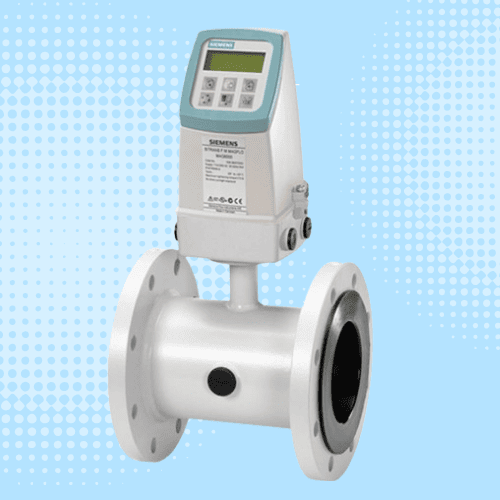
MAGNETIC FLOWMETER
An electromagnetic flow meter is often called a magmeter. This device measures the flow rate of conductive liquids in a pipe. It operates on the principle of Faraday’s law of electromagnetic induction. Many industries use it, where accurate flow measurement is essential for conductive liquids.
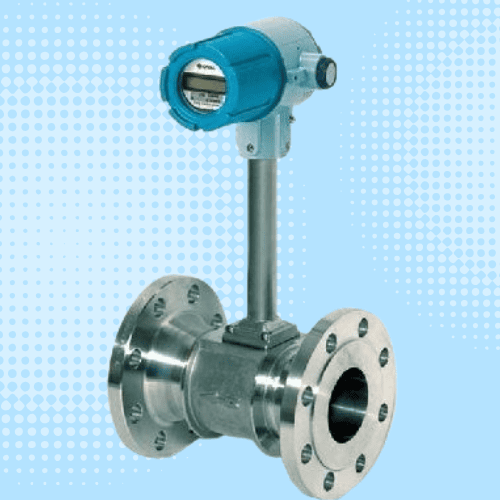
VORTEX FLOWMETER
The vortex flow meter measures the flow of liquid or gas in both liquid and steam status. For some liquids, like water, it is easy to measure the flow rate. But, steam flow measurements are a challenging task. It becomes more difficult because temperatures affect the properties of the fluid.

MASS FLOWMETER
Thermal mass flow meters are used worldwide to measure material flow. They consist of a probe that inserts into the stream being measured or comes in contact with the thermal mass of the fluid. The temperature difference then calculates how much heat flows through that space area.
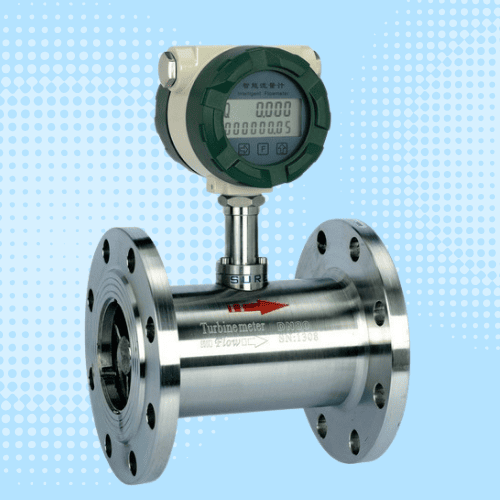
TURBINE FLOWMETER
The turbine flow meter working method is simple and easy. They consist of a rotating rotor with propeller blades mounted in housing bearings. Once the fluid flows through the turbine, the rotor rotates. The flow rate is proportional to the speed of the rotor.
.
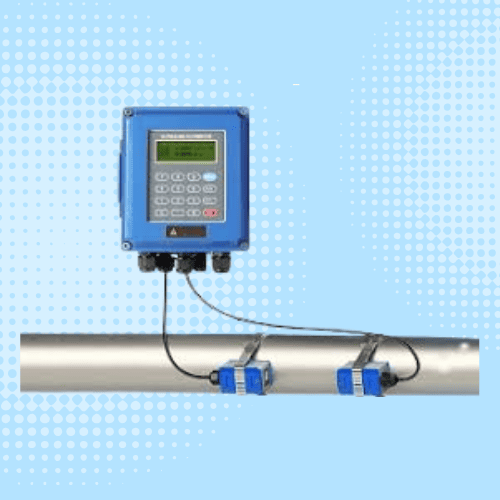
ULTRASONIC FLOWMETER
All kinds of fluid flow can be measured with clamp on ultrasonic flow meter in most situations. It can detect and report downstream and upstream changes in flow conditions by measuring the time it takes for sound waves to travel through a fluid.
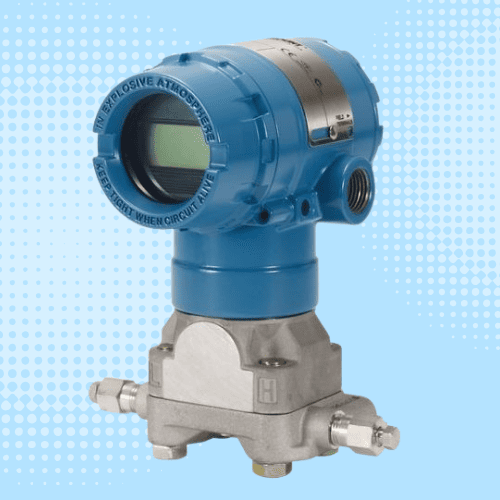
D P FLOWMETER
When measuring the flow of a low viscosity fluid in a pipeline, the differential pressure flow meter is the most common and cost-effective option. Compared to other ways of measuring flow, these meters tend to be straightforward, dependable, and versatile in function.

ROTAMETER
A rotameter also called variable area flowmeters, are industrial flowmeters that measure the volumetric flow rate of a gas or fluid. It is the oldest principles of cost effective flow measurement method with simple design. It uses in majority of industries.
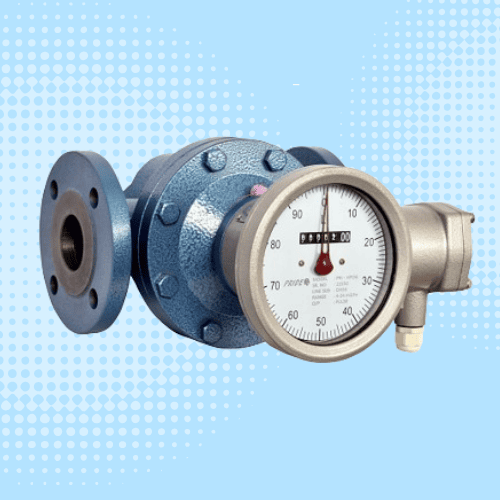
OVAL GEAR FLOWMETER
An oval gear flow meter is a displacement type volume meter that transfers defined incremental volumes into individual measuring chambers. The number of rotations inside the chamber counts and determine the flow rate and total volume.
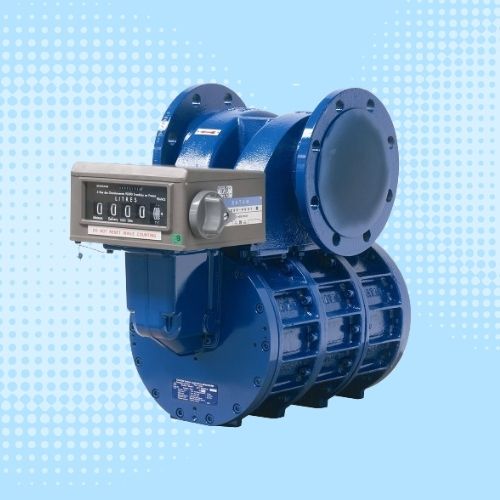
P D FLOWMETER
Positive displacement flow meter works by the volumes of a liquid through a series of gears or chambers inside the meter. By counting the number of isolated volumes passed, a flow measurement can be obtained. Each positive displacement design uses different ways.
• Electromagnetic FlowMeter.
It can use in a wide range of applications. Including water and wastewater treatment, chemical processing, power generation as well as fuel flows in gas stations and oil refineries. They can also be used to monitor airflow in ventilation systems or even blood flowing through veins. It is an ideal choice for measuring high-viscosity liquids that may clog or damage other types of sensors. These devices also provide accurate measurements even when there’s low liquid levels or pressure fluctuations. This makes them perfect for use in pipelines with intermittent flows. Such as those found at well sites where the pipeline must go over hills and dales before reaching a central plant facility.
If you need to monitor fluid movement through your process line but want to avoid problems like clogging or false readings due to pressure fluctuations? Then an electromagnetic flow meter could be just what you need. We have all sorts of different models available so contact us today. If you’d like more information about how we can help solve your measurement needs. The major features are as follows. It is a velocity flow measurement device. It measures the volume flow of conductive liquids. Many projects its use as reliable water flowmeter.
Furthermore, it not only has a site display. It can provide standard current signals like 4-20mA. For recording and adjusting controls to realize automatic detection and long-distance signal transmission. It can measure the flow of many kinds of liquids. Like slurries in water, wastewater, chemical, dairy, and so on. It can also use in many kinds of industries such as food, beverages, pharmaceutical, petrochemical, steel, paper, and mining, etc.
• Vortex FlowMeter.
It uses for measuring the flow of liquid or gas in both liquid and steam status. For some liquids, like water easy to measure the flow rate. But high-temperature fluids like steam flow measurements is not an easy task. It becomes more difficult because high temperatures affect the properties of the fluid. Making them different than they would at room temperature. That’s why vortex meters are versatile.
It is also used in compressors as air flowmeter. They have all kinds of features. That makes it easier to measure the flow rate of different types of fluid. Steam flow measurement is very important in process industries and power plants. Throughout the whole process, there were many obstacles that had to be overcome. One of them was an improper installation to get an accurate measure of steam flow.
There are three different ways in which the vortex meter can install. Through a flanged connection, insertion into pipe or wafer mounting on top of the pipe. The flanged and wafer connections provide more accuracy than the insertion method. Because they allow for greater access to direct readings at any point along the pipeline. But these types are difficult to install in large line sizes due to their size and weight. The inserting model uses when the facility cannot stop for installation purposes.
• Thermal Mass FlowMeter.
Thermal coriolis mass flow meters use for material flow measurement. These flowmeters comprise of a probe that either inserts into the flowing stream or comes into contact with the fluid’s thermal mass. By leveraging the temperature differential, the amount of heat passing through that particular spatial region is computed. Typically, these meters fall into three distinct categories: bypass, probes, and flow-through designs. Each category is specifically suited for particular measurement tasks in diverse environments. The first type, known as bypass, employs two passages (one with high velocity) and one measurement passage (with low velocity). This design is particularly useful for gas applications where minor temperature variations arise due to the viscosity effects on density.
This type offers two available operating modes. The first mode ensures a constant electric power while measuring the rise in temperature. Conversely, the second mode maintains a constant temperature difference and calculates the corresponding electricity needed to sustain it. Although the second method provides a wider range in meter readings, it is considerably intricate and time-consuming to utilize.
• Turbine FlowMeter.
It is an in line flowmeter, uses for volumetric total flow or measuring flow rate. Its working method is simple and easy. They consist of a rotating rotor with propeller blades mounted in housing bearings. Once the fluid flows through the turbine, the rotor rotates. The flow rate is directly proportional to the speed of the rotor. The rotor turns because of the fluid force. There are different methods used to detect the speed of the rotor. The most common method is placing a mechanical shaft and a sensor.
There are different methods used to detect the speed of the rotor. The most common method is placing a mechanical shaft and a sensor. Its design varies according to the shape of the spinning rotor. like paddlewheel meters and propeller meters. A paddlewheel turbine meter has a rotor that rotates on the axis parallel to the flow of fluids. Most of the paddlewheel meters are insertion type. The rotor in the propeller-type is suspended in the fluid stream to detect the flow. This type of meter is commonly used in liquid applications.
Another type of turbine meter is the axial turbine in which the rotor revolves around the flow axis. This type uses for oil measurements, industrial gas, and liquid measurements. These meters vary the design of the rotor and blade quantity. The shape of the axial meter for liquid measurement is completely different from it used to measure the gas.
These meters use in industries like oil, automotive, laboratory, and water treatment. Sometimes they are installed in applications that are found in the chemical and beverage industry.
• Clamp On Ultrasonic FlowMeter.
The ultrasonic clamp-on flowmeters can measure flow in most situations .It is used as drinking water flowmeter in many sensitive industries. Because it will not contaminate the water as it does not have direct contact with water It can detect and report downstream and upstream changes in flow conditions by measuring the time it takes for sound waves to travel through a fluid.
Ultrasonic flowmeters have several advantages over conventional vortex flowmeters, including the elimination of moving parts and the consequent decrease in failure rates and increase in service life, as well as the ability to be clamped to the side of a pipe for installation and calibration, which eliminates the need to halt production.
Our ultrasonic clamp-on flowmeters enable flexible placement of measurement with minimal impact on operational continuity.These meters are accurate and adaptable for use in a wide range of industries, pipe thicknesses, and fluids, and their installation requires no closure of the operation. Our clamp-on meters are easily installed and removed, allowing your team to work more quickly and perform flow spot checks at virtually any pipeline segment.
These meters come in various configurations, including wire rope, magnetic bolt-on, chain, Velcro® strap, and a weldable steel shaft with a metal band. In addition to measuring the flow of gases and vapors, ultrasonic flowmeters are also helpful for measuring the flow of liquids that contain solids. They can be utilized for installation and upkeep purposes and provide highly accurate measurements.
• Differential Pressure FlowMeter.
When measuring the flow of a low viscosity fluid in a pipeline, the differential type flowmeter is the most common and cost-effective option. Compared to other ways of measuring flow, these meters tend to be straightforward, dependable, and versatile. The principle behind differential pressure meters is to restrict flow in a pipe to a certain extent. Thus, dynamic pressure will be differential between the apparatus’s top and bottom sides. The difference in static pressure is monitored to ascertain the volumetric flow rate. The inlet differential-pressure meter is the most common type of industrial flowmeter in use today. Fluids ranging in viscosity from vapors to highly viscous fluids have been metered using differential-pressure devices.
Differential-pressure flowmeters are widely used because of their affordability and ease of use. Artificial constriction can be used by differential pressure flowmeters to detect the pressure drop of fluids as they move through the meter. The pressure drop across the restriction is assumed to be proportional to the double the flow rate, as predicted by Bernoulli’s principle. A larger pressure drop results in a greater flow rate. All sorts of clean liquids and gases can be measured with precision by these tough meters.
• Positive Displacement FlowMeter.
Positive displacement flow meters, measure the flow rate by allowing a known volume of fluid to pass through their measuring tubes with each rotation. Positive Displacement flowmeters are high-precision devices with moving parts that are hydraulically locked in proportion to the flow rate of the fluid being measured. This enables the meter to accurately measure liquids of varying viscosities, intermittent flows, and low flow rates. When fluid motion occurs, the Positive Displacement meter updates instantaneously; when it ceases, so does the update.
The density, fluidity, or turbulence of the liquid inside the pipe do not affect this type of measurement. Since the volume of an incompressible fluid is constant, there is no need to adjust the meter’s reading to account for variations in the fluid type. The turndown and accuracy of positive displacement flowmeters are exceptional.Even though pressure loss may be difficult, they are helpful for use with incredibly thick, unclean, or caustic fluids. Positive displacement meters have many benefits, including controlling stockpiles of supplied chemicals such as caustics, acids, cleaners, and deodorizers. Diesel generators used in mines and construction sites can have their fuel use tracked with these devices.
• Oval Gear FlowMeter.
The flow meter in an oval shape is remarkably compact and was developed for use in situations with low pressure. The U-shaped versions are larger than the singular tube flow, which results more compact design that takes up less area for installation. The majority of flowmeters in the shape of a triangle are capable of producing multivariable measurements. Flowmeters with oval gears are made for applications that need an accurate volume of liquid dispensed. Some examples of these applications include the use of brake fluid, wiper fluid, and antifreeze. These gear flowmeters are developed with an emphasis on reliability to ensure that they are capable of withstanding severe conditions.
These meters have plastic covers that resist corrosion and shock, so they can withstand harsh conditions. Long-term precision is provided by gear flowmeters in an oval shape. Among the benefits is a performance that is amazingly accurate and reliable throughout the entirety of the product’s existence. It is an excellent choice to be used in a wide variety of chemical processes, such as solvents based on petroleum, water mixtures, and other substances that are acceptable with the materials used throughout the construction of the building.
• Variable Area FlowMeter.
A variable area flow metrer also known as rotameter is a device that measures the volume of liquid and gas flow. The terms “rotameter” and “flowmeter” are interchangeable and can be used interchangeably. A rotameter can be installed next to a tube to measure the gas flow rate, or on the tube to measure the liquid flow rate.
Rotameters have been used in many industries because of their cost-effectiveness. They are a mechanical device that does not require any power to measure the flow of gas or liquid. As a result, they are often used in hazardous or remote areas where power is expensive to provide.
The Rotameter allows users to quickly and easily understand their process by reading the flow measurement. For instance, it can tell if the process looks dirty or cloudy, and if the filters need to be replaced. It can also tell if the process is the correct color. Both the cost and function of rotameters contribute to cost savings.
• Major Types of Water FlowMeters.
Water flowmeter is used to measure water flow through a pipe. There are many different types of water flowmeters and metering accessories available. It all depends on your application, budget, and need for scheduled maintenance! So, what is the best water flowmeter technology for you? Ultrasonic or electromagnetic water meter? Volumetric or mechanical flowmeters? Each of these technologies has its advantages and drawbacks. Let’s talk about them so you can make an educated decision.
The mechanical flowmeter is the most common type of industrial water flowmeter. It is also the most cost-effective. A mechanical flowmeter measures the flow of water by rotating the turbine blades. The speed of the blades is proportional to the volume of the water flow. Mechanical flowmeters do not work with water pressure systems with low water pressure. Mechanical flowmeters are accurate, but they can become clogged when the water has larger particles or is unclean. It will lead to higher maintenance costs.
Ultrasonic water flowmeters, as the name indicates, use ultrasound to measure the water flow rate. The flow rate is determined by the difference in receiver times between two ultrasonic signals sent in opposite directions. (upstream and downstream). Ultrasonic flowmeters are suitable for high flow rates as well as non-conducting water. They can clamp onto a pipe from the outside to measure water flow in large pipes.
Another one is the magnetic flow meter. It is an industrial digital water meter that uses a magnetic field to measure water flow rate. It works because any liquid in a magnetic field will produce a voltage when it passes through it. The faster it flows, the higher the voltage will be generated – in direct correlation to the velocity of the water. Magnetic flowmeters are highly accurate and typically have visible LED displays. They are suitable for most applications except custody transfer or pure water applications.
• Major Types of Fuel FlowMeters.
A fuel flow meter is an instrument utilized to gauge the rate of fluid or fuel movement while transferring fuel from one point to another, such as from a fuel tank to a vehicle. While most fuel flowmeters possess a numerical display, they can also feature either a digital or mechanical interface. In certain cases, fuel flowmeters forego a local display altogether and instead rely on transmitting an electrical pulse to an external display. Given the diverse range of fluids and transfer applications, there exists a wide array of flow meter types. Turbine, oval gear, and nutating disk flo meters operate differently, yet all serve the same purpose.
Turbine fuel flowmeters utilize a turbine that rotates on an axis to measure the flow rate of fluid. As the fluid passes over the turbine, its velocity is recorded, with a direct correlation to the turbine’s speed of rotation. In Digital Turbine Fuel Flowmeters, a magnet or sensor is positioned on the turbine blade, sending a pulse to the computer with each rotation.
The oval gear flowmeter comprises of two gears positioned at a right angle, creating a T shape. The intersection of the gear teeth determines the center point of the flowmeter. This design ensures that no fluid can pass through that particular point. As the fluid encounters the rotating gears, it triggers their movement. The fluid enters the measuring chamber and progresses towards the outlet port of the meter.
Simultaneously, fresh fluid enters the flowmeter through the inlet port, propelling the gears into another measuring chamber. During this process, one chamber opens while the other closes. The flow rate is determined by the magnets located within the rotating gears. As the gears pass an electrical reed switch, they emit a signal that allows for flow calculation based on rotation speed.
The nutating disc fuel flowmeter possesses a solitary mobile component, offers affordability, and demonstrates remarkable accuracy. Although its functionality is straightforward. The meter comprises a measurement chamber featuring circular sides and conical tops and bottoms. Within this chamber, a disk traverses the center, effectively dividing it into two distinct sections.
Due to the disk’s non-perpendicular orientation to the opposite side of the chamber, it undergoes a wobbling motion (known as nutation) as the fluid flows above or below it. Once the disk completes one wobble, the fluid exits the chamber, signifying the precise volume that has passed through the meter. Concurrently, a pin, affixed to the apex of the center sphere perpendicular to the disk, completes a full rotation during each wobble. The count of these revolutions determines the volume of fluid that has traversed the meter.
When considering the incorporation of a fuel flowmeter in your diesel dispensing system, the meter itself will accurately determine the quantity of fuel being dispensed during a transaction. This measurement is commonly referred to as the batch total. In most cases, the batch total can be reset prior to each transaction. Consequently, flowmeters typically provide two distinct totals. The first is known as the cumulative total, representing the overall amount of fuel transferred throughout the lifespan of the flowmeter. The cumulative total is typically non-resettable.
Mechanical and digital fuel flowmeters are the two most prevalent types. Battery-powered meters utilize a digital display, while mechanical meters employ a tick-over digit display. Accuracy is a crucial consideration when selecting a fuel flowmeter. The level of accuracy depends on the flow range of the meter. To ensure accuracy, the meter’s fuel flow rate must meet a minimum threshold. The flow rate, measured in liters per minute, is another significant factor to consider. However, for low consumption rates like heating oil, flowmeters measure in liters per hour.
• How to Select a FlowMeter?
Good flowmeter selection starts with a good understanding of the application requirements and types of flo meters. That’s why it’s essential to assess the characteristics of the process fluid and the overall installation. Developing specifications that outline the application requirements is a systematic, sequential process.
When selecting a flowmeter, you must consider many factors such as plant personnel’s familiarity, calibration and maintenance experience, availability of spare parts, minimum and maximum flows, line pressure and the period between failure histories, etc., at the plant site. It is also recommended that you calculate the installation cost only after following these steps. A typical flow measurement mistake is the reverse of this sequence. Instead of selecting a sensor that will perform correctly, you try to justify using a sensor because it is cheaper. These “inexpensive” purchases may be the most expensive installations.
• Where to install the FlowMeter ?
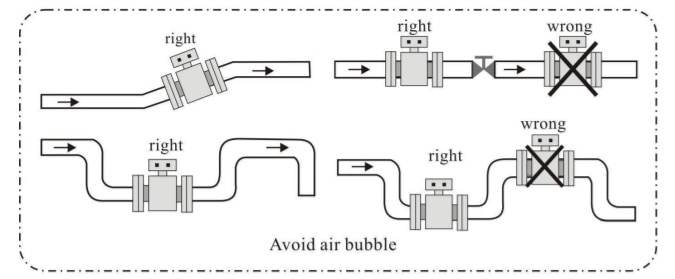
There are many factors to be considered when install a flowmeter. The direction of the piping ,size and material of the piping, schedule of the piping and operation, the accessibility of the piping such as up or downstream turns, valves and regulators location, available straight pipe run lengths In relation to the area, are the major factors to be considered when decide the installation location.
• How to Maintain a FlowMeter?
The maintenance requirements and lifespan of a flow meter are influenced by various factors. Opting for the appropriate instrument for a particular application stands out as the utmost crucial factor. Inadequate selection of a device will inevitably lead to complications in the early stages. Flowmeters that lack moving parts generally necessitate less maintenance compared to those with moving parts. Nevertheless, all flowmeters will eventually require some degree of maintenance.
Differential pressure flowmeter primary elements require large piping, valves and fittings when connected to secondary elements. Maintenance may be a recurring task in such installations. Impulse lines can become clogged or corroded and require cleaning or replacement. Incorrect placement of secondary element can lead to measurement errors. Movement of secondary element can be costly.
Moving part flowmeters need to be inspected on a regular basis, especially if the dirty or viscous liquid is being metered. Filters should be installed before moving parts flowmeters. Filters will help reduce the amount of fouling and wear on the flowmeter. Obstruction less instruments, like ultrasonic or electromagnetic flowmeters, may have issues with the electronic components of their secondary element. Pressure sensors connected to secondary elements should be removed and checked on a regular basis.
In applications where coatings can be present, obstruction-less devices such as magnetic and ultrasonic units are also at risk. If the coatings are insulating, then the operation of the magnetic flowmeter will eventually be compromised if the flowmeter electrodes are not insulated from the fluid. This condition can be avoided by regular cleaning. In the case of an ultrasonic flowmeter, the refraction angles can change, and as the sonic energy absorbs by the coating, the meter will become inoperative.
• FlowMeter Price.
Before purchasing a flow meter, buyers should evaluate their requirements, considering various factors for comparison. These may include price, temperature and pressure tolerance, speed capabilities, security features, IP protection, and size. By carefully considering these aspects, buyers can make a cost-effective purchasing decision amidst the wide range of flowmeter options available from different suppliers on the market.
The price of meters varies based on their sizes and types. It is important to note that customers are willing to pay higher prices for attractive features and lower prices for less appealing ones. As one of the leading flow meter suppliers in Dubai, our team of experienced instrumentation engineers is available to provide guidance in selecting the most suitable meter for your needs.
